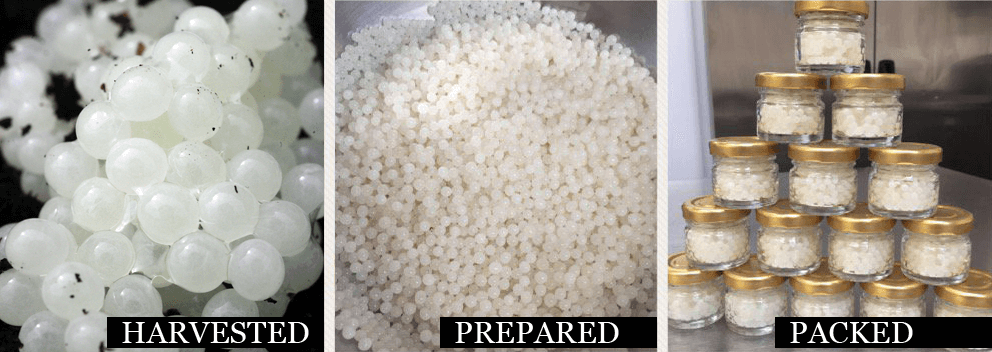As snail farmers we first became aware that snail eggs were being used in gastronomy in 2010, more so at that time in France. However, the consumption of the little white pearls has spread throughout Europe and beyond during the past decade. Not surprisingly this gained our interest in the product, particularly as with our indoor farming system we are able to produce snail eggs (caviar) on a weekly basis throughout the year.
The best snail for caviar is the Helix Aspersa Maxima (gros gris) which, fortunately was the species we already bred. Having the system in place for breeding snails it was a simple enough process to increase our production in order to give an excess of eggs to be sold as caviar.
That was 7 years ago, and the use of snail caviar has increased significantly since then. During the Spring of 2017 we decided to create a special breeding room using Helix Aspersa Maxima solely for the purpose of caviar production.

The following is an extract from the book
Snail Eggs and Samphire
by Derek Cooper
“The story begins, as many good stories have done, in distant Tibet, an unlikely Shangri-La, you may think, for the discovery of anything more recherché than curdled yak’s milk. But it was here five years ago in a remote lamasery that M. Chatillon, with a mind tuned to the perception of the previously unperceived, watched as villagers deposited their offerings in the lap of a gilded Buddha. Among the oblations was a bowl of what looked like pinky-beige opalescent pearls. When no one was looking, M. Chatillon put a finger in the bowl and conveyed two of the small globules to his mouth.
I ate them, Alain told us, and I think immediately zees is fantastique. It is a revelation. And thus was the secret of snail eggs brought back from the land of eternal snows. Or something like that. Back in Rennes, Alain spent five years experimenting until he found the perfect gastropod, the indigenous petit gris. Now he has over 300,000 worker snails in twelve farms in different parts of France. The annual production of one snail, he claims, is only a hundred eggs, which makes them as expensive as the finest Beluga caviar”.
